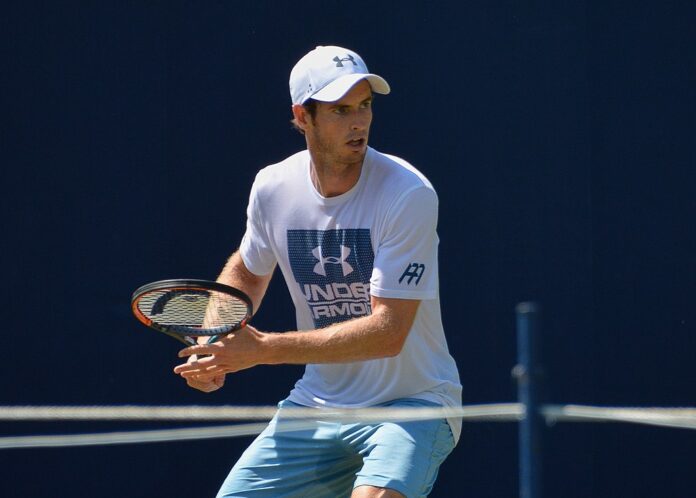Andy Murray’s return to clay courts ends in a straight-sets loss to Gregoire Barrere in Bordeaux
Andy Murray experienced a disappointing exit at the ATP Challenger event in Bordeaux, losing 6-4, 6-2 to France’s Gregoire Barrere. This match marked Murray’s return to competitive play after recovering from a ruptured ankle ligament injury sustained at the Miami Open in March.
Murray, currently ranked 77th in the world, faced a tough start, falling 5-0 in the first set. Despite a valiant effort to recover to 5-4, Barrere held his nerve and served to take the set. In the second set, Murray struggled to maintain momentum, getting broken to love in the third game. He missed two crucial break points in the subsequent game, allowing Barrere to extend his lead to 3-1. The Frenchman ranked 115th globally, continued his dominance, eventually closing out the match in one hour and 27 minutes.
Match Highlights and Analysis
Murray managed to convert three of his six break points but couldn’t match Barrere’s efficiency, as the Frenchman converted six out of seven. The defeat highlights the challenges Murray faces as he continues his comeback from injury.
This tournament was Murray’s first since his injury in Miami. He advanced through the first round after his opponent, Kyrian Jacquet, retired while trailing in the second set. Despite the loss, Murray’s participation marks a significant step in his recovery process.
Future Plans and Career Outlook
At 37, Murray has hinted at potentially winding down his illustrious career, stating he does not plan to “play much past this summer.” However, he has yet to announce his final tournament, leaving fans and the tennis world in anticipation.
Murray, a three-time Grand Slam champion, has faced numerous challenges with injuries in recent years, but his determination to compete remains evident. His performance in Bordeaux, though not victorious, reflects his ongoing commitment to the sport and his ability to compete at a high level.
Dan Evans’ Progress
Meanwhile, fellow Briton Dan Evans continues to make strides in the same tournament. Evans defeated Frenchman Harold Mayot 6-3, 7-6 (7-3) to advance to the quarter-finals. He will next face Shang Juncheng of China, looking to further his success in Bordeaux.
Broader Implications for British Tennis
Murray’s journey and Evans’ progress highlight the current state of British tennis. While Murray’s career appears to be winding down, Evans and other emerging talents represent the future of British tennis. Murray’s legacy continues to inspire upcoming players, even as he navigates the latter stages of his career.
In-Depth Analysis :
Political Perspective
From a political standpoint within the tennis community, Murray’s return to the court, despite his injuries, demonstrates the resilience and tenacity that elite athletes must embody. His participation in tournaments, even at the Challenger level, underscores his commitment to the sport and the influence he holds within the tennis world.
Sociological Perspective
Sociologically, Murray’s career trajectory offers a compelling narrative of perseverance and resilience. His struggles with injuries and subsequent comebacks resonate with fans and aspiring athletes, emphasizing the importance of mental and physical fortitude. His potential retirement will mark the end of an era, significantly impacting the tennis community and its fanbase.
Economic Perspective
Economically, Murray’s participation in tournaments continues to draw attention and spectators, contributing to the financial health of the events. His presence boosts ticket sales, viewership, and sponsorship opportunities. However, his eventual retirement could shift these dynamics, highlighting the need for emerging players to step into the spotlight.
Local Perspective
Locally, Murray remains a beloved figure in British sports. His achievements have brought pride to the UK, and his matches continue to attract significant attention from British fans. As he approaches the end of his career, his legacy will likely inspire a new generation of British tennis players.
Theoretical Perspective
Theoretically, Murray’s career can be analyzed through the lens of sports psychology and the impact of injuries on an athlete’s performance and career longevity. His ability to return to high-level competition after severe injuries exemplifies the psychological resilience required in professional sports. Additionally, his career offers insights into the physical demands of tennis and the long-term effects of sustained athletic performance.
Murray’s defeat in Bordeaux serves as a reminder of the challenges faced by even the most accomplished athletes. As he navigates the final chapters of his career, his influence on the sport remains profound, inspiring both current players and future generations.
